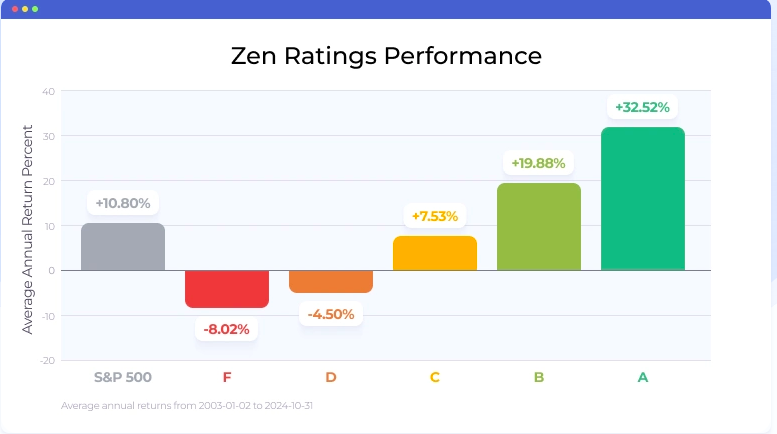Top 10 Tips To Evaluate The Ai And Machine Learning Models In Ai Stock Analysing Trading Platforms
It is important to assess the AI and Machine Learning (ML) models employed by stock and trading prediction platforms. This ensures that they offer accurate, reliable and actionable information. Models that are overhyped or poorly constructed could result in inaccurate predictions or even financial losses. Here are the top 10 strategies for evaluating AI/ML models that are available on these platforms.
1. The model's design and its purpose
It is crucial to determine the goal. Determine whether the model was designed for long-term investing or short-term trading.
Algorithm disclosure: Determine if the platform discloses which algorithms it employs (e.g. neural networks or reinforcement learning).
Customizability. Examine whether the parameters of the model can be tailored according to your own trading strategy.
2. Evaluate model performance through metrics
Accuracy: Verify the accuracy of the model when it comes to forecasting the future. However, don't solely depend on this measurement since it can be misleading when used in conjunction with financial markets.
Precision and recall (or accuracy) Assess how well your model is able to differentiate between genuine positives - e.g. accurate predictions of price movements as well as false positives.
Risk-adjusted gains: Determine whether the forecasts of the model lead to profitable transactions, after taking into account the risk.
3. Check your model by backtesting it
History of performance The model is evaluated using historical data in order to determine its performance under previous market conditions.
Testing out-of-sample: Ensure that your model has been tested with data that it wasn't used to train on in order to avoid overfitting.
Analyzing scenarios: Examine the model's performance under different market conditions.
4. Make sure you check for overfitting
Signs of overfitting: Search for models that are overfitted. These are models that perform exceptionally good on training data but poor on data that is not observed.
Regularization Techniques: Check to see if the platform employs techniques such as dropout or L1/L2 regualization in order prevent overfitting.
Cross-validation (cross-validation) Check that your platform uses cross-validation to evaluate the generalizability of the model.
5. Assess Feature Engineering
Check for relevant features.
Select features: Ensure the system only includes important statistically relevant features and does not contain redundant or insignificant information.
Dynamic feature updates: Determine whether the model is able to adapt to changing market conditions or the introduction of new features in time.
6. Evaluate Model Explainability
Readability: Ensure the model gives clear reasons for its predictions (e.g. SHAP value, importance of the features).
Black-box Models: Be cautious when platforms employ complex models without explanation tools (e.g. Deep Neural Networks).
User-friendly insights: Find out if the platform gives actionable insight in a form that traders can understand and utilize.
7. Assessing the model Adaptability
Changes in the market: Check if the model can adjust to changing market conditions, like economic shifts and black swans.
Examine if your platform is updating its model on a regular basis with new information. This will increase the performance.
Feedback loops: Ensure that the platform incorporates real-world feedback and user feedback to improve the model.
8. Be sure to look for Bias and fairness
Data bias: Ensure that the data regarding training are representative of the market, and free of bias (e.g. excessive representation in certain times or in certain sectors).
Model bias: Determine if are able to actively detect and reduce biases that exist in the forecasts of the model.
Fairness: Ensure that the model doesn't favor or disadvantage specific sectors, stocks or trading strategies.
9. Assess Computational Effectiveness
Speed: See whether the model is able to make predictions in real-time or with minimal latency. This is particularly important for traders who trade high-frequency.
Scalability - Verify that the platform can handle large datasets, multiple users and not degrade performance.
Resource usage: Make sure that the model has been optimized to make efficient utilization of computational resources (e.g. the use of GPUs and TPUs).
Review Transparency and Accountability
Model documentation: Make sure the platform is able to provide detailed documentation on the model's design, structure, training process, and limitations.
Third-party audits: Check if the model has been independently verified or audited by third-party audits.
Error handling: Examine to see if your platform has mechanisms for detecting and rectifying model errors.
Bonus Tips
Case studies and reviews of users User reviews and case studies: Study feedback from users and case studies to assess the model's performance in real life.
Trial period: You can use a demo, trial or a free trial to test the model's predictions and the usability.
Support for customers: Ensure that your platform has a robust support for technical or model issues.
If you follow these guidelines, you can assess the AI/ML models used by platforms for stock prediction and make sure that they are accurate, transparent, and aligned to your trading objectives. View the best incite for site advice including ai chart analysis, ai stock trading bot free, ai stock, trading with ai, best ai trading app, trading with ai, ai for investing, best ai for trading, ai trade, market ai and more.

Top 10 Tips For Evaluating The Educational Resources Of Ai Stock Analyzing/Predicting Trading Platforms
It is important for users to review the educational tools that AI-driven trading platforms and stock prediction platforms so that they can be able to use the platform effectively, interpret results and make informed decisions. Here are 10 top tips to determine the usefulness and the quality of these educational tools.
1. Comprehensive Tutorials and Guides
Tips: Make sure that the platform has tutorials and user guides that are targeted to beginners, as well as advanced users.
Why: Users can navigate the platform more easily by following clear directions.
2. Webinars & Video Demos
Check out video demonstrations and webinars as well as live sessions.
Why visual content and interactive content make it easier to grasp difficult concepts.
3. Glossary
Tips: Make sure the platform offers glossaries that define important terms associated with AI as well as finance and other fields.
The reason: It can help beginners to comprehend the terms of the platform, particularly those who are new to the platform.
4. Case Studies: Real-World Examples
Tip. Verify that the platform offers case studies that show how AI models were applied to real-world situations.
Practical examples are used to demonstrate the platform’s effectiveness and allow users to interact with the applications.
5. Interactive Learning Tools
Explore interactive tools such as tests, sandboxes and simulators.
The reason: Interactive tools let users test their knowledge and practice without risking real money.
6. Updated content
Be aware of whether the educational materials are regularly updated to keep up with developments in the market, developments in technology or regulatory changes.
What's the reason? Outdated information could result in confusion and use incorrectly.
7. Community Forums that provide Support
Look for active communities forums or support groups that allow users to share ideas and insights.
Reasons Expert advice and support from peers helps improve learning and resolve problems.
8. Programs for Certification or Accreditation
TIP: Make sure the platform provides certification programs or courses that are accredited.
Why: Formal recognition can boost credibility and motivate learners to keep learning.
9. Accessibility and user-friendliness
Tip: Evaluate the ease of access and user-friendly the educational resources are (e.g. portable-friendly PDFs, downloadable PDFs).
The reason: Access to the internet is easy and ensures that learners can study at their own speed and convenience.
10. Feedback Mechanisms for Educational Materials
Find out if the platform allows users to give feedback on the materials.
What is the reason: Feedback from users can improve the relevancy and quality of the content.
Bonus tip: Use different formats for learning
The platform must offer a wide range of options for learning (e.g. video, audio and text) to meet the requirements of a variety of learners.
If you take the time to carefully review these aspects, you can determine if you have access to a variety of educational resources which will enable you to make the most of their potential. Take a look at the best ai stock analysis hints for website info including how to use ai for copyright trading, ai in stock market, ai for trading stocks, ai stock trader, ai investment tools, ai stock trader, ai in stock market, best ai stock prediction, investing with ai, chart ai trading and more.

Comments on “20 Pro Suggestions To Picking AI Stock Predictions Analysis Websites”